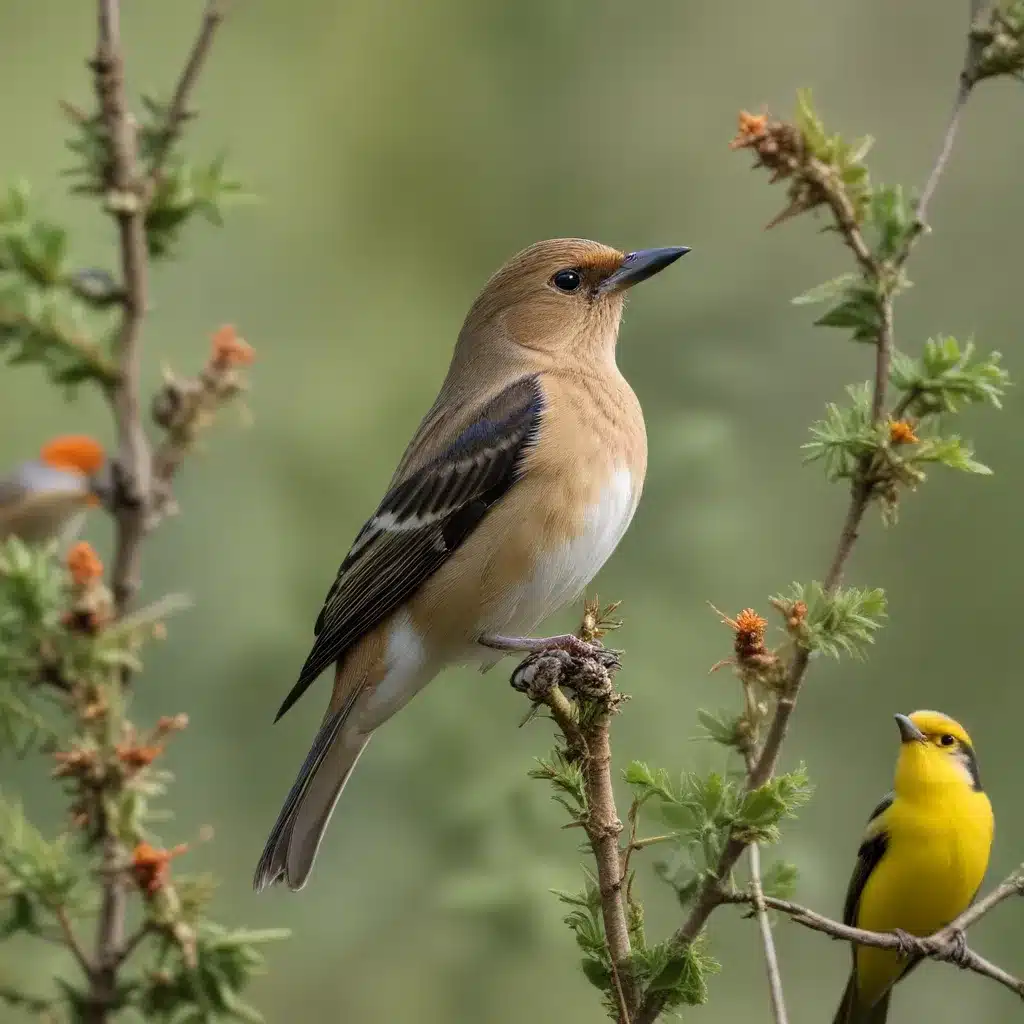
The dawn chorus rises in a symphony of melodic trills, rich warbles, and staccato calls that fill the air. These intricate avian vocalizations serve as a captivating soundtrack to the natural world, showcasing the remarkable acoustic abilities of birds. From the haunting flute-like whistle of the Wood Thrush to the virtuosic sweeps of the Northern Cardinal, the diversity and complexity of birdsong have long fascinated researchers, musicians, and nature enthusiasts alike.
Acoustic Properties of Birdsong
At the heart of this avian acoustic artistry lies the syrinx, a specialized vocal organ unique to birds. Unlike the human larynx, the avian syrinx is located at the base of the trachea, allowing birds to produce a wide range of vocalizations. The independent control of the two sides of the syrinx enables songbirds to achieve remarkable vocal feats, such as singing two distinct pitches simultaneously or rapidly alternating between high and low notes to create dazzling trills.
The acoustic properties of birdsong can be broken down into three key elements: pitch, rhythm, and timbre. Pitch refers to the highness or lowness of a sound, and birds exhibit an impressive range, from the low hoots of owls to the piercing whistles of songbirds. Rhythm encompasses the timing and patterning of notes, with some species delivering rapid-fire sequences of staccato syllables while others weave more legato, fluid melodies. Timbre, or sound quality, can vary greatly, with some birds producing clear, flute-like tones, while others emit scratchy, buzzing calls.
Behavioral Functions of Birdsong
These multifaceted vocalizations serve a variety of important behavioral functions for birds. Territoriality is perhaps the most well-known, with male songbirds using their songs to establish and defend their breeding grounds from rivals. The complexity and volume of their songs can convey information about the singer’s size, health, and fighting ability, deterring potential usurpers.
Birdsong also plays a crucial role in mate attraction. Females often use the male’s song as a gauge of his fitness and suitability as a partner, with more elaborate or virtuosic performances typically indicating a higher-quality mate. In some species, such as the Indigo Bunting, males may even modify their songs to better appeal to potential mates.
Additionally, birds employ vocalizations to facilitate parent-offspring communication. Nestlings use begging calls to signal their hunger to attentive parents, while adult birds may use specific contact calls to maintain cohesion within their family groups. The ability to recognize and respond to these vocal cues is essential for the survival and successful rearing of young birds.
Neurobiology of Birdsong Production
The remarkable vocal abilities of birds are rooted in the specialized neural circuitry that governs song production. At the heart of this system are a series of interconnected forebrain nuclei, collectively known as the “song system.” These structures, including the HVC (used as a proper name) and the robust nucleus of the arcopallium (RA), work in concert to generate the complex motor patterns underlying birdsong.
The development of this neural network is closely tied to the critical period of song learning, during which young birds are most receptive to acquiring their species-specific vocalizations. By listening to and imitating the songs of adult “tutors,” nestlings gradually refine their own repertoires, a process that can take several months or even years to complete.
Comparative Bioacoustics
The diversity of avian vocalizations extends far beyond the familiar songs of songbirds. Non-passerine species, such as parrots, owls, and hummingbirds, have also evolved impressive vocal abilities, often relying on different anatomical structures and neural pathways to produce their unique calls and songs.
Interestingly, while passerine species are renowned for their complex, learned vocalizations, many non-passerine birds exhibit remarkable vocal complexity through other means. The duetting behavior of some tropical species, for example, involves the coordinated exchange of calls between mates, creating intricate vocal “conversations.”
Ecological and Evolutionary Perspectives
The acoustic properties of birdsong are closely tied to the habitat structure in which they are produced. The Acoustic Adaptation Hypothesis suggests that the evolution of birdsong has been shaped by the physical characteristics of the environment, with species inhabiting dense forests, for instance, often favoring low-frequency, long-range vocalizations to overcome sound attenuation.
Birdsong also plays a crucial role in the process of speciation, with divergent song patterns serving as a reproductive isolating mechanism between closely related taxa. As populations become geographically isolated, they may develop distinct dialects, ultimately leading to the emergence of new species over evolutionary timescales.
In the face of mounting environmental challenges, the study of birdsong has taken on an even greater urgency. As habitats are fragmented and degraded, the ability of birds to effectively communicate through song may be compromised, potentially disrupting vital social and reproductive behaviors. Understanding the complex interplay between avian vocalizations, ecology, and evolution is thus essential for developing effective conservation strategies to safeguard these feathered virtuosos.
Whether you’re an avid birdwatcher, a nature enthusiast, or simply someone who appreciates the beauty of the natural world, the captivating symphony of birdsong is sure to leave a lasting impression. By delving into the acoustic intricacies and behavioral functions of these avian vocalizations, we gain a deeper appreciation for the remarkable communicative abilities of our feathered friends. So the next time you step outside and are serenaded by the dawn chorus, listen closely and marvel at the symphony unfolding before you.
For more information on birding, bird care, and the latest avian news and events, be sure to visit Mika Birds Farm. Our dedicated team of avian experts is here to help you explore the wonders of the avian world.


